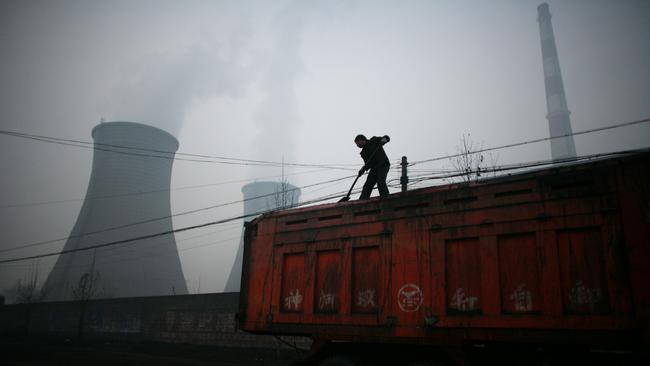Coal prices tipped to remain stronger for longer amid policy squeeze
Coal prices will stay stronger for longer as regulation and a reluctance to fund new mines squeezes supply, say investors.

Private equity mining investors say buoyant coal prices are likely to stay stronger for longer as stringent mining environmental regulations and a reluctance from capital providers to fund new thermal coal mines prevents new developments.
Andy Zhmurovsky, the local head of EIG Global Energy Partners (whose Harbour Energy unit made an unsuccessful bid for Santos this year), said demand for thermal coal was very strong and the outlook was good.
But he said new supply was not arriving because investors were not keen to invest.
“There are pressures from our investors not to invest in coal, or support what’s seen as a dying industry, which will make the commodities cycle more prolonged,” Mr Zhmurovsky told the Energy Mines and Money conference in Brisbane today.
“Normally when you have a period of high prices, you are going to have a supply response … now because it is so hard to find capital to expand capacity, you can have prolonged periods of high coal prices without any supply response.”
He said the amount of energy the world would need meant coal would remain in high demand.
“People talk about the slow death of coal, but we are just not seeing that,” he said.
Mr Zhmurovsky would not comment on Harbour’s $14.5bn bid for Santos, which was rejected by the target after a long engagement.
But he said the $US19bn EIG was still keen on investing in east coast gas, where it has a 12 per cent stake in Senex and was “quite excited about what’s happening in the Northern Territory.”
Taurus Funds manager Gordon Galt said Queensland’s coal sector, which largely sells coking coal for steelmaking, would also be restrained when it came to building new mines.
“One of the things we have been increasingly concerned about is environmental costs,” Mr Galt said at the conference.
“You might say the final rehab amount for a mine was $200 million, but when you get there it’s $350m because the rules will change along the way.”
He said new Queensland laws would mean that if a mine was built on a floodplain, the whole pit would need to be refilled.
“The Bowen Basin is basically an entire floodplain and the definition of a floodplain is pretty loose,” Mr Galt said.
“Unless you’ve got an existing mine you will find it really hard.”
For private equity investors prepared to invest in coal, the reluctance of other investors is providing new opportunities in the Australian coal sector, now that a period of mine sales from big miners like Rio and Anglo American (who cancelled plans to exit Australia when prices rose.)
And for those with existing mines, the delayed supply response is keeping prices strong.
Mr Galt said steel mills were concerned about where their coking coal will come from the down track.
“My conversations with the Japanese show they are incredibly worried about where, five years from now, they are going to get their metallurgical coal,” he said.
Federal Industry Department head commodities analyst David Thurtell said coal prices were forecast to fall in coming years, but not back to levels seen from 2014 to 2016.
“We think there will be modest trip lower in the next four to five years and it might settle in $US70s or $US80 for Newcastle thermal coal and in metallurgical coal $US140 to $US150,” he said.
Newcastle thermal coal is currently trading at about $US118 a tonne and Queensland coking coal is $US200.
But the view that new mines won’t be built in Queensland was not unanimous. Xcoal chief Ernie Thrasher, whose coal marketing and investing company is US-based, said he thought Queensland would go down a similar path to US coal, mining harder coal as it matured.
“We’ve identified significant reserves in coal in Queensland, that were ignored for many years because the coal seams were too low (narrow) or not of a suitable quality,” Mr Thrasher said.
“But we believe the experience in the US over the last five decades mining low coal, using low seam technology will expand dramatically in Queensland and it will produce a lot of opportunities for companies creative enough to go after those reserves.”



